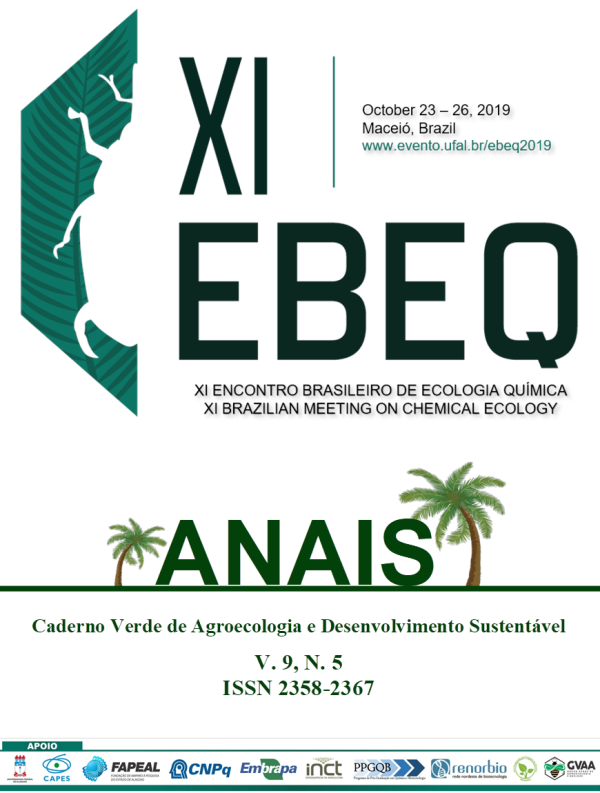BRIDGING THE GAP BETWEEN BASIC RESEARCH AND PRACTICAL APPLICATIONS AGAINST BITING INSECTS
Resumo
Stable flies are one of the most important arthropod pests of livestock. With changing climate and agronomic practices, they expand their roles as pests and disease vectors as well. Their painful bites reduce livestock productivity, annoy companion animals, and interfere with recreational activities. Current management technologies are unable to effectively manage stable flies. It has been reported that one of the most important invasive livestock diseases in Europe, African Swine Fever, can be transmitted by stable flies either through the ingestion of infected flies, as well as via their bite. During the last 10 years, devastating outbreaks of stable flies resulting from flies developing in decomposing crop residues have been reported in several regions of the world including Australia, Central and South America. Such outbreaks are producing infestation levels greater than 1,000 stable flies per animal; while the economic threshold is approximately 15 flies per animal. Such infestations can reduce animal productivity to zero and cause mortality. Just in US, it isestimated that stable flies reduce cattle productivity in the US up to $2 billion losses per year. Volatiles from the rumen digesta of cattle including dimethyl trisulfide, butanoic acid, p-cresol, skatole and especially 1-octen-3-ol are attractive to stable flies. Attractant compounds,such as phenol, p-cresol and m-cresol,from cattle manure slurry, have been identified and demonstrated with enhanced attraction in the field. In recent years, stable fly outbreaks in crop residues including pineapple, vegetables, and sugarcane have also been reported. Volatiles released from sugarcane ethanol byproducts are discovered with different profiles compared with livestock associated substrates indicating that stable fly use many attractant compounds associated with their development environments for host and habitat location. Plant-based repellent compounds have been widely used against blood sucking insects in veterinary and public health fields.However, one of the biggest shortcomings of plant-based repellents are short-lived in their effectiveness.Therefore, it is necessary to discover and explore more resources/compoundsof plant origins with extended longevity. Recently we havediscovered several long-lasting repellent compounds from coconut oil that can provide repellency lasting up to 2 weeks against several types of blood-sucking insects. Over 90% of repellency/feeding deterrence have been demonstratedagainstbiting flies including stable flies, ticks, mosquitoes, cockroaches and bed bugs.Some of these compounds’ derivatives also act as strong bio pesticide that inhibit stable fly larval growth and detersfemale oviposition. In some cases, the strength of repellency from these natural repellent products is even stronger than the golden standard, universal insect repellent, DEET (N,N-Diethyl-3-methyl-benzamide). In this presentation, I will discuss several studies related to our main objective on “How to use these attractant- or repellent-based semiochemicalsto develop an economically- and environmentally sound strategy for biting insect control, particularly against stable flies. I will also introduce several of our recent technology transfers with industry partners on developing novel technologies for stable fly infestation reduction and animal well-being via Push-Pull strategies.Downloads
Publicado
Como Citar
Edição
Seção
Licença
Termo de cessão de direitos autorias
Esta é uma revista de acesso livre, em que, utiliza o termo de cessão seguindo a lei nº 9.610/1998, que altera, atualiza e consolida a legislação sobre direitos autorais no Brasil.
O(s) autor(es) doravante designado(s) CEDENTE, por meio desta, publica a OBRA no Caderno Verde de Agroecologia e Desenvolvimento Sustentável, representada pelo Grupo Verde de Agroecologia e Abelhas (GVAA), estabelecida na Rua Vicente Alves da Silva, 101, Bairro Petrópolis, Cidade de Pombal, Paraíba, Brasil. Caixa Postal 54 CEP 58840-000 doravante designada CESSIONÁRIA, nas condições descritas a seguir:
O CEDENTE declara que é (são) autor(es) e titular(es) da propriedade dos direitos autorais da OBRA submetida.
O CEDENTE declara que a OBRA não infringe direitos autorais e/ou outros direitos de propriedade de terceiros, que a divulgação de imagens (caso as mesmas existam) foi autorizada e que assume integral responsabilidade moral e/ou patrimonial, pelo seu conteúdo, perante terceiros.
O CEDENTE mantêm os direitos autorais e concedem à revista o direito de divulgação da OBRA, com o trabalho simultaneamente licenciado sob a Licença Creative Commons do tipo atribuição CC-BY.
O CEDENTE têm autorização para distribuição não-exclusiva da versão do trabalho publicada nesta revista.
O CEDENTE têm permissão e são estimulados a publicar e distribuir seu trabalho online (ex.: em repositórios institucionais ou na sua página pessoal) a qualquer ponto antes ou durante o processo editorial, já que isso pode gerar alterações produtivas, bem como aumentar o impacto e a citação do trabalho publicado.










